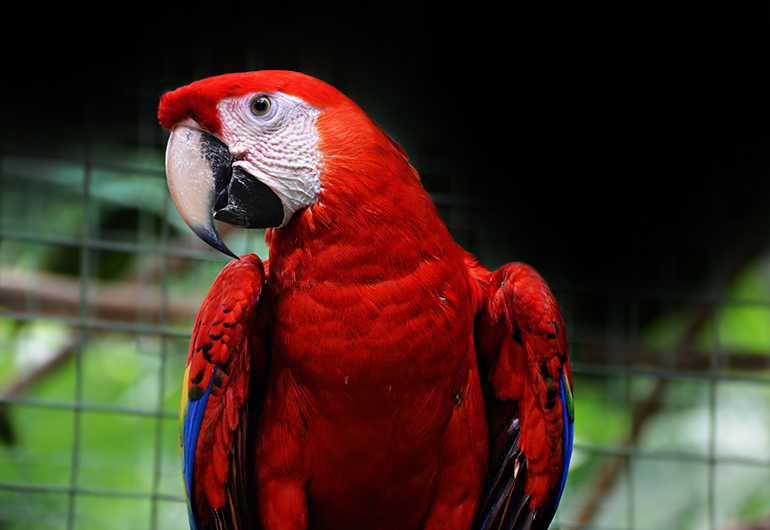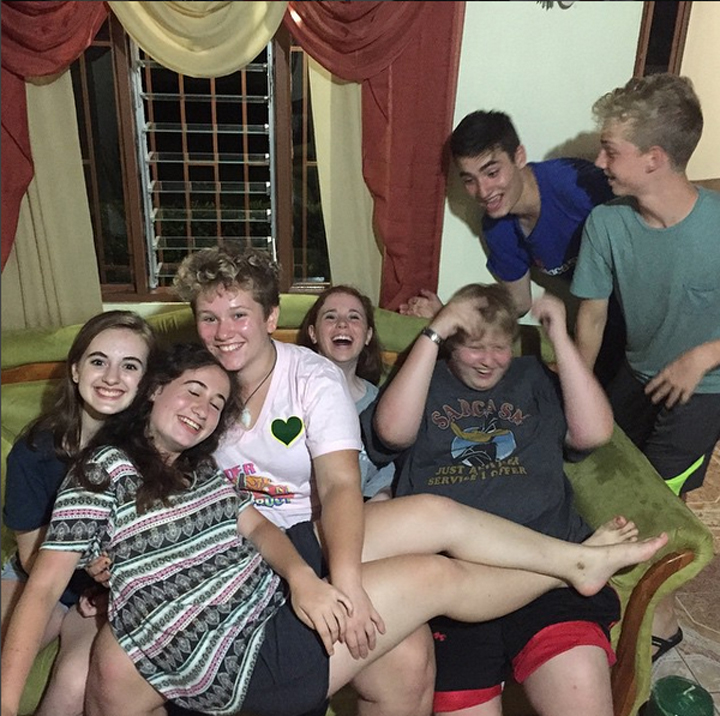Alumni Spotlight on Keyra Howery; Learning About Veterinary Care as a Volunteer

Keyra Howery volunteered with Greenheart Travel’s animal rescue center project for 8 weeks in the summer of 2015. Before leaving for Costa Rica, she was excited to get her feet wet in veterinary care and learning about animals. She has had a lifelong passion for animals, and this was an exciting opportunity for her to learn about them from direct, personal interaction.
Now that she has returned from the program, we sat down for an interview with her to get some of her reflections, favorite memories and advice for future participants.
Q: Can you tell me what your typical day as a volunteer is like?
I usually get up at 7 am, have breakfast, brush my teeth. Then Carlos, who is one of the tour guides at the rescue center, picks everyone up. We all jump in the car and we’re all talking and laughing as we go there, and then we get out and start cleaning cages. Some people work with Teniente, which means lieutenant in Spanish – it’s not his actual name. But some people work with Teniente to clean the cages and some of us work with Francisco who’s the vet. You can clean the cages, stock food for the animals. If Francisco had an injured animal in the morning when there weren’t a lot of people here, I could just sit in and watch and help him. He’d be like, “This is a broken wing!” and would move it, and then I got to feel the broken wing. It was really cool!
Q: What kind of animals are at the project?
We have spider monkeys, white-faced capuchin monkeys, we have an ocelot – he’s really old and doesn’t move a lot, we have Chita who’s our baby spider monkey, we have a baby raccoon and he’s very, very cute. We have a lot of parrots, because parrots are very popular as pets but once they get too loud people don’t like to have them as pets anymore. It’s illegal in Costa Rica for people to have wild animals as pets but people don’t obey the law. So people are like, “Hey! We found this wild parrot! Would you take it?” when it’s really been a domestic parrot for a couple months and now it won’t go fly and be with other parrots. It’s very common for people to have pets they shouldn’t have.
Q: How was your host family experience?
I have personally never stayed with a host family. It was really interesting to go into this experience not speaking a lot of Spanish and have them basically only be speaking Spanish. Even though I don’t speak perfect Spanish, it’s still been a really fun experience. My host sister, Jessica knows some English so that’s really helpful because I can just communicate with her. They’re wonderful people and really nice.
Q: What’s the biggest thing you’ve learned?
That’s so hard! I’ve learned so many things! I learned I’ m personally good at sawing bamboo, I didn’t know that. I can make incredible friends in just 4 days. That’s the thing I was probably most nervous about coming here. Am I gonna make friends? Are people gonna be nice? And yes, they are. I’m gonna visit these people when I go home, they’re really great. So I’ve learned I can make friends wherever I go and that’s a really valuable thing to know.
Q: What advice would you give to someone coming to volunteer in Costa Rica?
When I got here, I thought, “Man I wish I knew more Spanish!” That was the big thing because language barriers are hard– hard to get over and hard to deal with. But you have other English speakers to communicate with and there are English speakers at the center. They can help you out and you can also take lessons! If you really wanna get good at Spanish, you should take lessons. You can practice with your host family and the people at the project. What other advice… Bring bugspray! Bring sunscreen! Do not wear shorts to the project! Please, do not wear shorts to the project! That may be a cute outfit but we have a lot of mosquitos and I see bug bites covering their legs.
Q: What would you say to someone considering volunteering in Costa Rica?
Do you like animals? Yes? This is the place for you! Do you like cool people? Yes? This is the place for you! It improves your Spanish. You get to work with animals. You get to really help the vet, Francisco. That’s a lot of fun because you get to really feel the broken wing or just help the animals. That’s what I came here to do: help animals. And that’s what I am doing. It’s a lot of fun, there’s a lot of great people, and it’s a lot of language immersion. New experiences are good!
Q: If you could go back and do it again, would you?
This trip was absolutely worth it. You get to make great friends. You get to really interact with the animals and say things like, “You got pooped on by a parrot today!” You get to be really up close and personal with these animals. The baby raccoons we had – I got to feed them every single day. When there are less people you get to do more hands-on things with the animals. But even with people you can still really be with them. We clean cages every single day, twice a day. So we’re in there every day cleaning the cages and the parrots will come and land on your shoulder. Or sometimes we’ll go into the baby monkey’s cage and play with her and that’s really fun! Or we can go into the capuchin cage.

